 An oral environment that can damage teeth, also has the potential to interact with appliances. Acids are well known for the damage they can do, not least to teeth and metals. Conditions in the mouth can become more or less acidic depending on various factors, including diet and salivary flow.
An oral environment that can damage teeth, also has the potential to interact with appliances. Acids are well known for the damage they can do, not least to teeth and metals. Conditions in the mouth can become more or less acidic depending on various factors, including diet and salivary flow.
Despite being the hardest tissue in the body, cumulative exposure to acid damages dental enamel over time. Enamel is primarily composed of hydroxyapatite [Ca10(PO4)6(OH)2, HAP], which is not a perfectly stable compound, and can be subject to various chemical interactions that can alter it, layer by layer. In some ways this is beneficial – it is why fluoride toothpastes help to protect the teeth. The fluoride ions (F-) replace the hydroxyl ions (OH-), creating fluorapatite, which is more acid resistant. However, interactions with acids can lead to the phosphate (PO4) being stolen and replaced with carbonate (CO3), which increases the solubility of the enamel.[i]
Increased acidity in the oral cavity, leads to enamel erosion, which gradually weakens the teeth. The length of exposure, the frequency and the type/strength of the acid all effect the intensity of the erosion.1Saliva can help reduce the damage caused, by enabling calcium and phosphates to flow around the teeth, neutralising acids and remineralising tooth enamel.1, [ii]Consequently, in patients with xerostomia, the reduction in salivary flow leaves them relatively less protected.
Dietary choices can cause short-term spikes in acidity within the oral cavity, when these become periodic substantial damage can accumulate. The normal oral pH of saliva is between 6.7 to 7.4. When carbohydrates are consumed, bacteria in the mouth begin the digestive process, releasing acidic biproducts. A drop in oral pH to below 5.5 begins breaking down enamel, increasing the chance of the patient developing caries, and eventually losing teeth. Various beverages can cause particularly significant drops in oral pH, including: fruit juices, coffee, and soft drinks (these drinks also frequently contain high levels of sugar). In patients with typical salivary flow, it can take around a quarter of an hour for these fluids to cease affecting the mouth. Solid sugars can take even longer to be cleared, adhering to tooth surfaces and providing bacteria with an extended period to metabolise them into harmful biproducts.[iii]
Gastroesophageal reflux disease (GERD) is an already common complaint, and prevalence is rising – including among the young. GERD occurs where stomach acid escapes upwards into the oesophagus, primarily causing uncomfortable heartburn and an unpleasant taste. Other symptoms include: halitosis, oesophagitis, bloating, nausea and vomiting, difficulty or pain swallowing, oesophageal ulcers, narrowing and scarring.[iv]GERD is a chronic disorder, that affects up to one in four Europeans at some point in their lives. Risk factors for GERD include age, sex, race, use of analgesics, diet, smoking, low levels of physical activity and high body mass index (BMI).[v]
Many of these factors are also associated with edentulism, and in the case of smoking early significantly increases the chances of losing teeth prior to age fifty. BMI as a risk factor for edentulism is somewhat inconclusive across the literature, however, a high BMI does raise the risk of diabetes, which is associated with periodontal disease.[vi]Consequently, a patient with partial or full edentulism, is more likely to have GERD and other comorbidities (such as Type 2 diabetes).
Eating disorders which involve vomiting (such as bulimia), can also subject the teeth and anything else in the oral cavity to highly acidic gastric juices, resulting in significant damage over time. In such cases, it is generally agreed that the disorder must be brought under control before comprehensive restorative treatment, otherwise the continued erosion can lead to failure and further complications for the patient.[vii]
Many partial dentures are supported with metal. Just as acid can damage the enamel, over time it can affect these metals. Gastric acid is strong enough to leach away trace amounts of metal ions into the saliva. While this is believed to be within safe tolerances for most of the population, it could pose problems for patients with metal allergies (approximately 10% of patients, although this figure is believed to be underestimated).[viii],[ix]
For partially edentulous patients where acid and/or metal are potentially problematic, an advanced alternative to metal partial dentures is available. Ultaire®AKP from Solvay Dental 360®is an innovative non-corrosive polymer that contains absolutely no metal, yet has comparable strength. It has been found that an alarming 40% of patients no longer use removable partial dentures within 5 years due to factors like pain and aesthetics.[x]Removable partial dentures made from Ultaire® AKP are aesthetically pleasing, non-irritating, lightweight and very comfortable.
The destruction and loss of the natural dentition is a gradual process, with many underlying factors. Some of these factors can also potentially affect dental prostheses. Lower pH levels in the mouth correspond to greater metal ion release from metals. Diet, alcohol-based mouth wash, eating disorders and acid reflux can all contribute to a more acidic oral environment.9Where it is within the patient’s power to modify these risk factors, it should be encouraged.
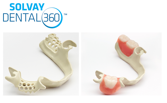
To book a Solvay Dental 360®Professional Lunch and Learn or to find more information Ultaire®AKP and Dentivera®milling discs,
please visit www.solvaydental360.com
References
[i]Derceli J., Faraoni J., Pereira-da-Silva M., Palma-Dibb R. Analysis of the early stages and evolution of dental enamel erosion. Brazilian Dental Journal.2016; 27(3): 313-317. http://dx.doi.org/10.1590/0103-6440201600667June 6, 2019.
[ii]Karlinsey R., Mackey A., Blanken D., Schwandt C. Remineralization of eroded enamel lesions by simulated saliva in vitro. The Open Dentistry Journal. 2012; 6: 170-176. https://www.ncbi.nlm.nih.gov/pmc/articles/PMC3486963/June 13, 2019.
[iii]Hans R., Thomas S., Garla B., Dagli R., Hans M. Effect of various sugary beverages on salivary pH, flow rate, and oral clearance rate amongst adults. Scientifica.2016: 5027283. https://www.hindawi.com/journals/scientifica/2016/5027283/June 6, 2019.
[iv]NHS. Gastro-oesphageal reflux disease (GORD). NHS Inform. 2019. https://www.nhsinform.scot/illnesses-and-conditions/stomach-liver-and-gastrointestinal-tract/gastro-oesophageal-reflux-disease-gordJune 6, 2019.
[v]Yamaskaki T., Hemond C., Fass R. The changing epidemiology of gastroesophageal reflux disease: are patients getting younger? Journal of Neurogastroenterology and Motility. 2018; 24(4): 559-569. https://www.ncbi.nlm.nih.gov/pmc/articles/PMC6175565/June 6, 2019.
[vi]Latif T., Vieira A. Risk factors and comorbidities associated with complete edentulism in individuals younger than fifty years of age. Journal of Dentistry and Oral Health. 2017; 4: 1-6. http://www.jscholaronline.org/articles/JDOH/Risk-Factors-and-Comorbidities.pdfJune 6, 2019.
[vii]Bonilla E., Del Aguila C., Wetzel D., Scott E., Bonilla S. Eating disorders: diagnosis and prosthodontic management. BAOJ Dentistry. 2017; 3(3): 37. https://bioaccent.org/dentistry/dentistry37.pdfJune 13, 2019.
[viii]Mercieca S., Conti M., Buhagiar J., Camilleri J. Assessment of corrosion resistance of cast cobalt- and nickel-chromium dental alloys in acidic environments. Journal of Applied Biomaterials & Functional Materials. 2018; 16(1): 47-54. https://journals.sagepub.com/doi/pdf/10.5301/jabfm.5000383June 13, 2019.
[ix]Jafari K., Rahimzadeh S., Hekmatfar S. Nickel ion release from dental alloys in two different mouthwashes. Journal of Dental Research, Dental Clinics, Dental Prospects. 2019; 13(1). https://joddd.tbzmed.ac.ir/Files/Inpress/joddd-17959.pdfJune 13, 2019.
[x]Campbell S., Cooper L., Craddock H., Hyde T., Nattress B., Pavitt S., Seymour D. Removable partial dentures: the clinical need for innovation. The Journal of Prosthetic Dentistry. 2017; 118(3): 273-280. https://www.sciencedirect.com/science/article/pii/S0022391317300732June 6, 2019.





 A study recently published in the Journal of Clinical Periodontologylooked at the impact of an anti-inflammatory diet on gingivitis.
A study recently published in the Journal of Clinical Periodontologylooked at the impact of an anti-inflammatory diet on gingivitis.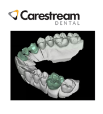
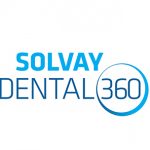
 An oral environment that can damage teeth, also has the potential to interact with appliances. Acids are well known for the damage they can do, not least to teeth and metals. Conditions in the mouth can become more or less acidic depending on various factors, including diet and salivary flow.
An oral environment that can damage teeth, also has the potential to interact with appliances. Acids are well known for the damage they can do, not least to teeth and metals. Conditions in the mouth can become more or less acidic depending on various factors, including diet and salivary flow.
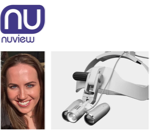



 Where are we now with Making Tax Digital (MTD)? Well, most of you will know that the pace of change has slowed down somewhat.
Where are we now with Making Tax Digital (MTD)? Well, most of you will know that the pace of change has slowed down somewhat.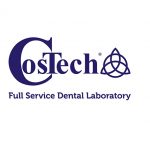
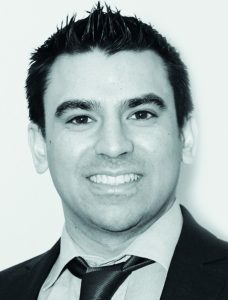 If you went back in time fifteen years and said to people that social media influencers would exist, it’s likely that people would call you crazy. After all, the very concept of someone promoting products on photo-based or video sharing apps and being paid enormous sums of money to do so would seem alien, especially with the celebrity culture already in place.
If you went back in time fifteen years and said to people that social media influencers would exist, it’s likely that people would call you crazy. After all, the very concept of someone promoting products on photo-based or video sharing apps and being paid enormous sums of money to do so would seem alien, especially with the celebrity culture already in place.



